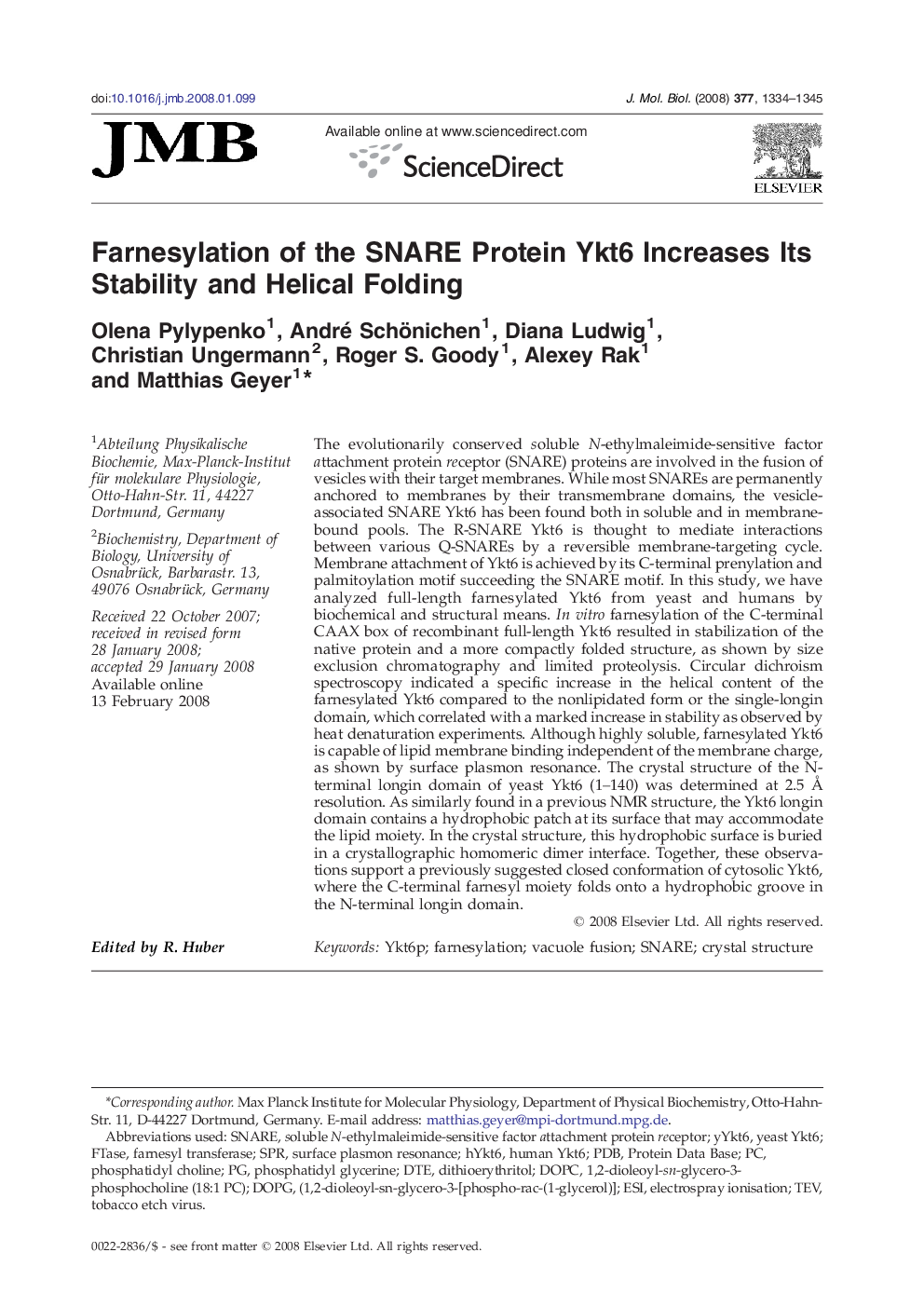| کد مقاله | کد نشریه | سال انتشار | مقاله انگلیسی | نسخه تمام متن |
|---|---|---|---|---|
| 2187749 | 1096138 | 2008 | 12 صفحه PDF | دانلود رایگان |

The evolutionarily conserved soluble N-ethylmaleimide-sensitive factor attachment protein receptor (SNARE) proteins are involved in the fusion of vesicles with their target membranes. While most SNAREs are permanently anchored to membranes by their transmembrane domains, the vesicle-associated SNARE Ykt6 has been found both in soluble and in membrane-bound pools. The R-SNARE Ykt6 is thought to mediate interactions between various Q-SNAREs by a reversible membrane-targeting cycle. Membrane attachment of Ykt6 is achieved by its C-terminal prenylation and palmitoylation motif succeeding the SNARE motif. In this study, we have analyzed full-length farnesylated Ykt6 from yeast and humans by biochemical and structural means. In vitro farnesylation of the C-terminal CAAX box of recombinant full-length Ykt6 resulted in stabilization of the native protein and a more compactly folded structure, as shown by size exclusion chromatography and limited proteolysis. Circular dichroism spectroscopy indicated a specific increase in the helical content of the farnesylated Ykt6 compared to the nonlipidated form or the single-longin domain, which correlated with a marked increase in stability as observed by heat denaturation experiments. Although highly soluble, farnesylated Ykt6 is capable of lipid membrane binding independent of the membrane charge, as shown by surface plasmon resonance. The crystal structure of the N-terminal longin domain of yeast Ykt6 (1–140) was determined at 2.5 Å resolution. As similarly found in a previous NMR structure, the Ykt6 longin domain contains a hydrophobic patch at its surface that may accommodate the lipid moiety. In the crystal structure, this hydrophobic surface is buried in a crystallographic homomeric dimer interface. Together, these observations support a previously suggested closed conformation of cytosolic Ykt6, where the C-terminal farnesyl moiety folds onto a hydrophobic groove in the N-terminal longin domain.
Journal: Journal of Molecular Biology - Volume 377, Issue 5, 11 April 2008, Pages 1334–1345